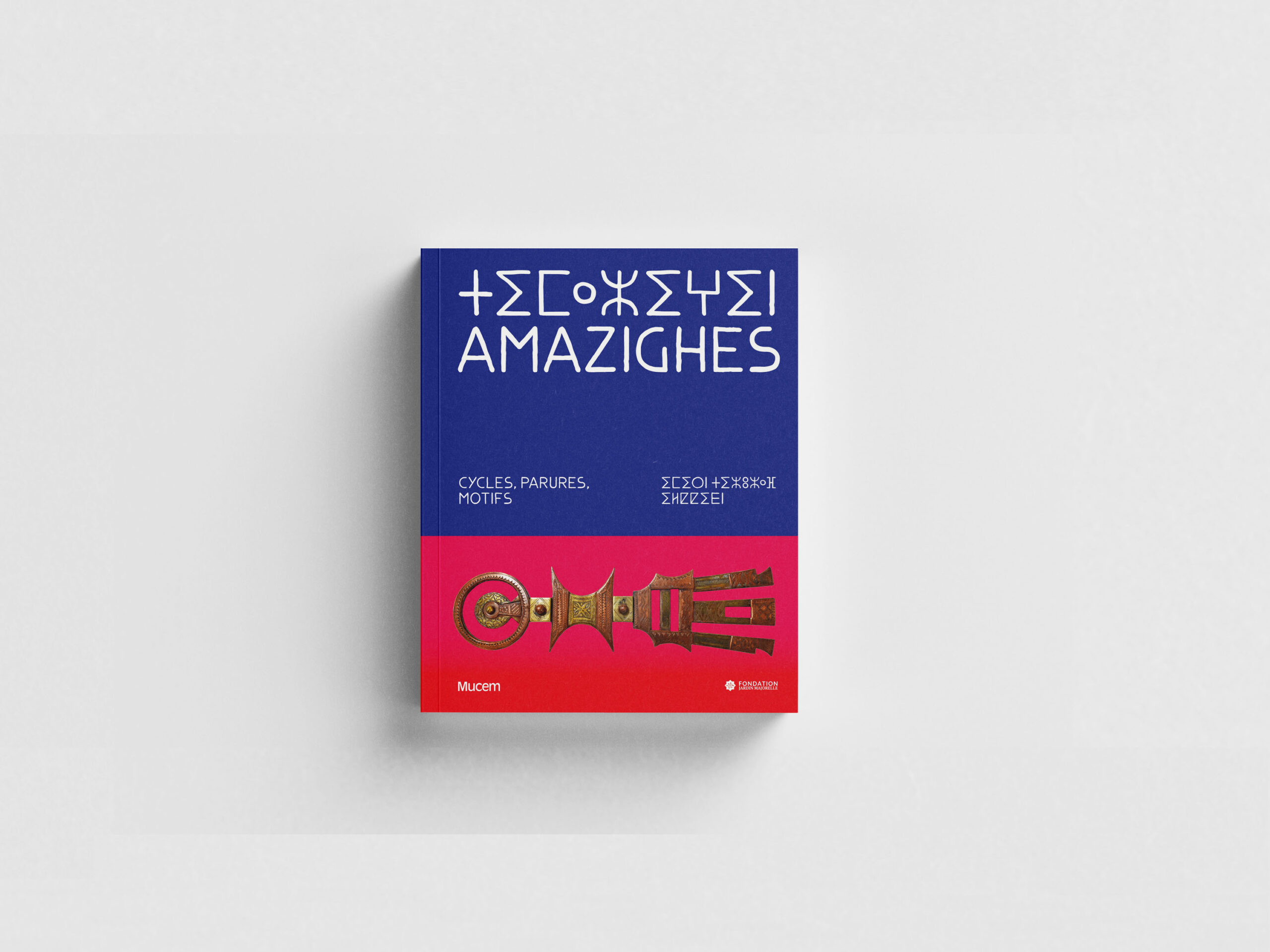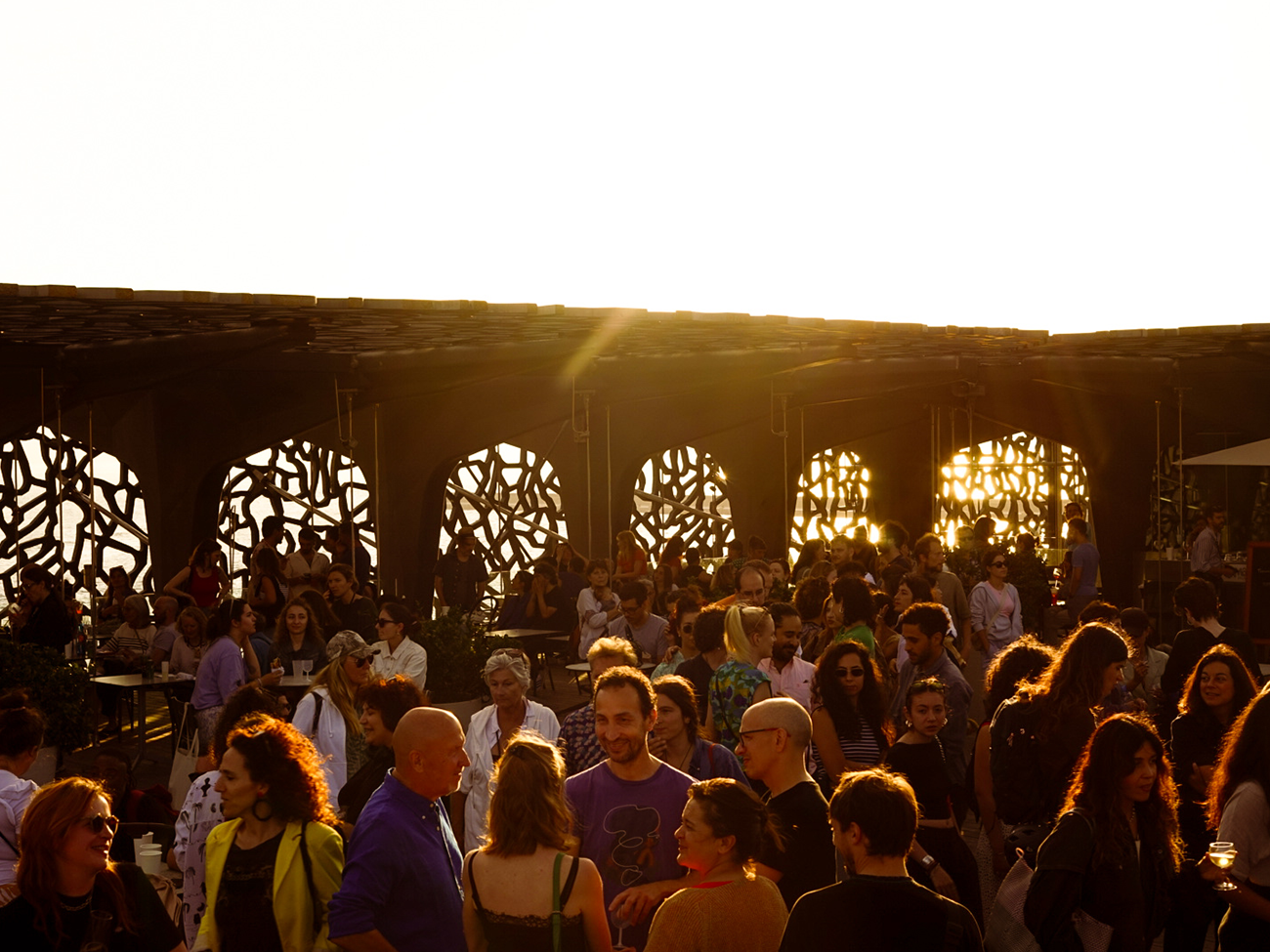


Bande Annonce de l'exposition "Amazighes"


The Amazigh world, whose origins are diverse and still the subject of debate in the scientific community, has spread, since at least the Neolithic period, over a wide territory from Egypt to Morocco and even the Canary Islands, including the north of Niger, Mali and Mauritania. It shares a linguistic identity with Tamazight and a common script, tifinagh.
In the Amazigh world, any act of adornment is associated with a sense of protection and eternal return. The act of adorning, decorating, covering or decorating refers to a group’s status and identity. Far from being incidental, adornment, weaving and ceramics are essential, constituting a kind of physical or magical filter, a total device for protecting the body, the domestic space and, more broadly, the overall social space. From tattooed bodies to jewellery, domestic objects, veils or tent stretchers, house walls or doors, the same motifs, forms and symbols can be found everywhere. These are not just decorative, but play a triple role: aesthetic, of course, but also therapeutic and apotropaic, and as a social and gender marker. Certain boundaries in Amazigh social space are clearly signified, in various ways, by words, attitudes and figurations, but also by certain specific rituals around thresholds and doors, because they mark or establish borders between the outside world and the domain of the home, which remains essentially the preserve of women.
Around the exhibition
Interview with Salima Naji (DPLG architect and PhD in anthropology) and Alexis Sornin (director of the Yves Saint Laurent Marrakech and Pierre Bergé Berber Arts museums), exhibition curators
Since the earliest myths, the matrix from which the birth of Amazigh culture is conceived has been feminine: the exhibition will open with the founding figures of the mother goddesses, symbolically associated with the fertile and protective figure of the circle. The exhibition will explore these notions of thresholds and protective circles, which lie at the heart of Amazigh culture and give it structure, before turning to the objects, surfaces, shapes and signs in which they are materially embodied: abstract and geometric signs, as well as figurative ones (turtle, fish, frog, ear of wheat, or an eye, anthropomorphic figure, etc.). Emphasis will be placed on the cyclical dimension of nature (the moon, the return of spring, the harvest) in connection with the gestures and skills of women (pottery, weaving, henna dyeing, basketry, tattooing, etc.) as well as those of men traditionally practising goldsmithing.
or eye, anthropomorphic figure, etc.). Emphasis will be placed on the cyclical dimension of nature (the moon, the return of spring, the harvest) in connection with the gestures and skills of women (pottery, weaving, henna dyeing, basketry, tattooing…) as well as those of men traditionally practicing goldsmithing.
The exhibition catalog

In the Amazigh world, every act of adornment – whether it involves adorning a body, a garment or a house – reflects a concern for belonging, protection and a link to the cycle of life. These gestures are never insignificant: they embody a collective memory, a symbolic or magical filter that links the body, the home and the community.
This exhibition will also provide an opportunity to examine the concept of “Berber permanence” and the contemporary transmission and circulation of this heritage within the large Amazigh diaspora, both in the field of artistic creation and in popular
cultures. Without forgetting, moreover, the appreciation or even cultural appropriation to which this heritage may be subject today.
Around 150 objects and works from the 19th century to the present day, as well as a few archaeological pieces, will be on display, including jewelry, ceramics, textiles, basketwork, sculptures, tools, photographs, videos, installations and archives, mainly from the collections of the Pierre Bergé Museum of Berber Arts at the Fondation Jardin Majorelle in Marrakech and those of the Mucem, but also from public and private collections in the Canary Islands, Morocco and France, as well as from artists.
Curators:
Salima Naji, architect DPLG and doctorate in anthropology
Alexis Sornin, Director of the Yves Saint Laurent Marrakech and Pierre Bergé Berber Art Museums
The Amazigh world, whose origins are diverse and still the subject of debate in the scientific community, has spread, since at least the Neolithic period, over a wide territory from Egypt to Morocco and even the Canary Islands, including the north of Niger, Mali and Mauritania. It shares a linguistic identity with Tamazight and a common script, tifinagh.

In the Amazigh world, any act of adornment is associated with a sense of protection and eternal return. The act of adorning, decorating, covering or decorating refers to a group’s status and identity. Far from being incidental, adornment, weaving and ceramics are essential, constituting a kind of physical or magical filter, a total device for protecting the body, the domestic space and, more broadly, the overall social space. From tattooed bodies to jewellery, domestic objects, veils or tent stretchers, house walls or doors, the same motifs, forms and symbols can be found everywhere. These are not just decorative, but play a triple role: aesthetic, of course, but also therapeutic and apotropaic, and as a social and gender marker. Certain boundaries in Amazigh social space are clearly signified, in various ways, by words, attitudes and figurations, but also by certain specific rituals around thresholds and doors, because they mark or establish borders between the outside world and the domain of the home, which remains essentially the preserve of women.

Bande Annonce de l'exposition "Amazighes"
Around the exhibition
Interview with Salima Naji (DPLG architect and PhD in anthropology) and Alexis Sornin (director of the Yves Saint Laurent Marrakech and Pierre Bergé Berber Arts museums), exhibition curators

Since the earliest myths, the matrix from which the birth of Amazigh culture is conceived has been feminine: the exhibition will open with the founding figures of the mother goddesses, symbolically associated with the fertile and protective figure of the circle. The exhibition will explore these notions of thresholds and protective circles, which lie at the heart of Amazigh culture and give it structure, before turning to the objects, surfaces, shapes and signs in which they are materially embodied: abstract and geometric signs, as well as figurative ones (turtle, fish, frog, ear of wheat, or an eye, anthropomorphic figure, etc.). Emphasis will be placed on the cyclical dimension of nature (the moon, the return of spring, the harvest) in connection with the gestures and skills of women (pottery, weaving, henna dyeing, basketry, tattooing, etc.) as well as those of men traditionally practising goldsmithing.
or eye, anthropomorphic figure, etc.). Emphasis will be placed on the cyclical dimension of nature (the moon, the return of spring, the harvest) in connection with the gestures and skills of women (pottery, weaving, henna dyeing, basketry, tattooing…) as well as those of men traditionally practicing goldsmithing.

The exhibition catalog

In the Amazigh world, every act of adornment – whether it involves adorning a body, a garment or a house – reflects a concern for belonging, protection and a link to the cycle of life. These gestures are never insignificant: they embody a collective memory, a symbolic or magical filter that links the body, the home and the community.
This exhibition will also provide an opportunity to examine the concept of “Berber permanence” and the contemporary transmission and circulation of this heritage within the large Amazigh diaspora, both in the field of artistic creation and in popular
cultures. Without forgetting, moreover, the appreciation or even cultural appropriation to which this heritage may be subject today.
Around 150 objects and works from the 19th century to the present day, as well as a few archaeological pieces, will be on display, including jewelry, ceramics, textiles, basketwork, sculptures, tools, photographs, videos, installations and archives, mainly from the collections of the Pierre Bergé Museum of Berber Arts at the Fondation Jardin Majorelle in Marrakech and those of the Mucem, but also from public and private collections in the Canary Islands, Morocco and France, as well as from artists.








